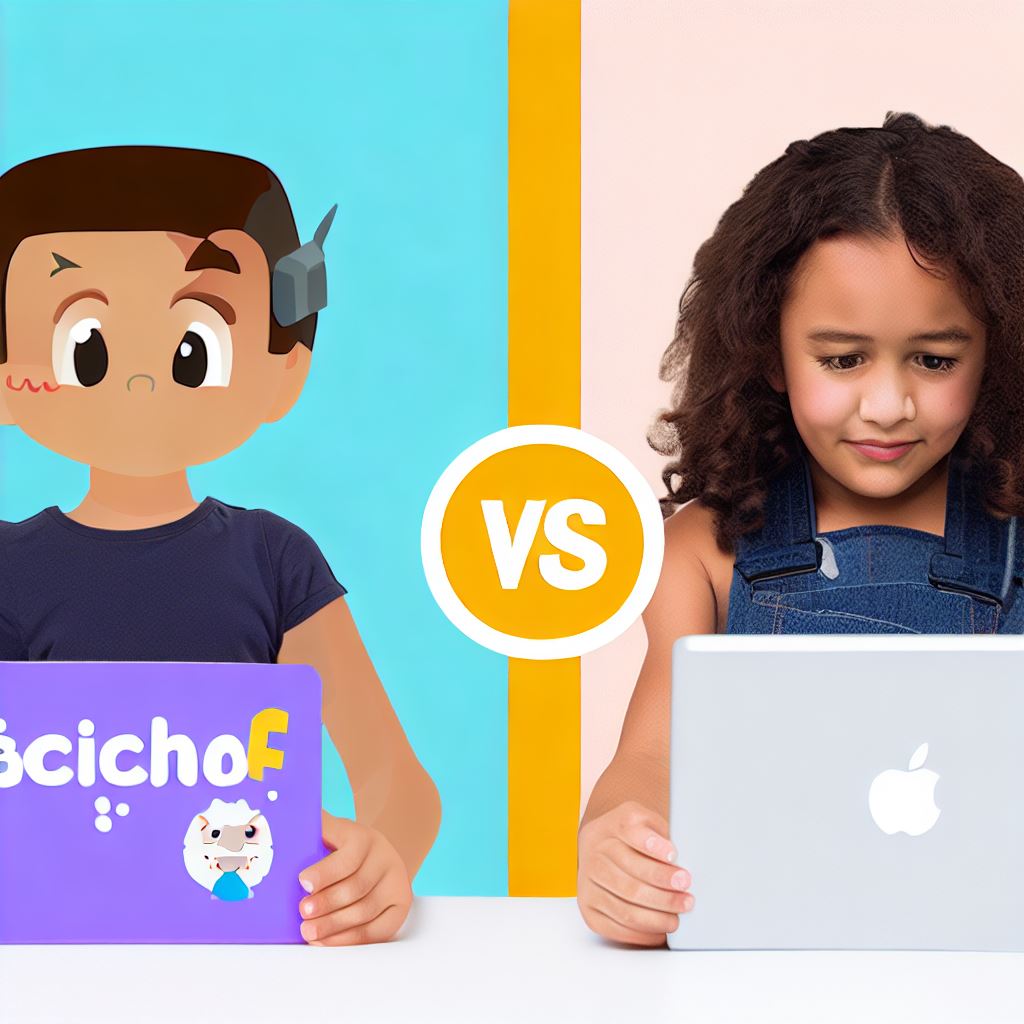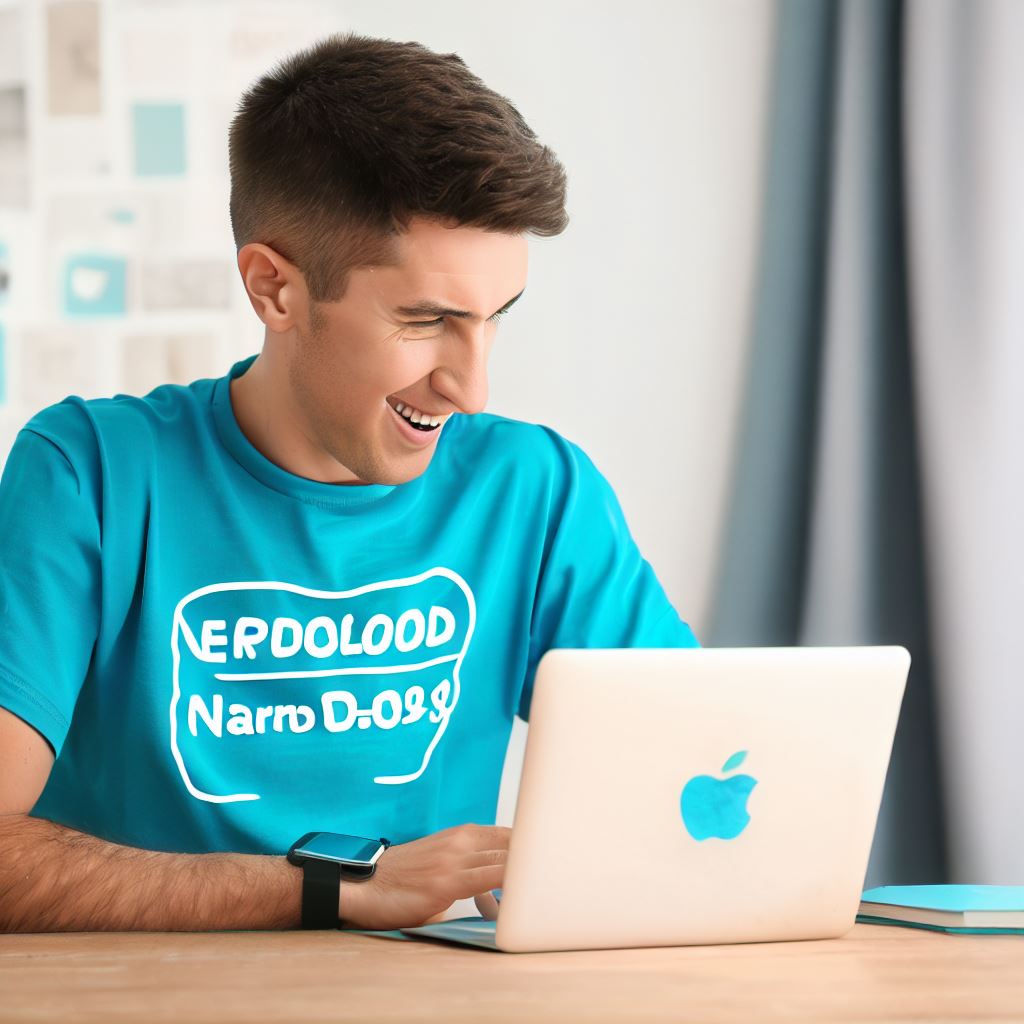Introduction
Coding has become increasingly popular for children, providing them with valuable skills for the future.
Two coding platforms, Scratch and ScratchJr, offer interactive and engaging experiences for young learners.
In today’s digital age, coding has emerged as an essential skill, fostering problem-solving, critical thinking, and creativity in children.
It is also a way to empower children and prepare them for the technologically advanced world they will grow up in.
Scratch and ScratchJr as coding platforms
Scratch and ScratchJr are coding platforms specifically designed for children. MIT developed Scratch for kids aged 8 and above, whereas ScratchJr caters to younger children aged 5-7.
Both platforms use a visual programming language that allows children to create interactive stories, games, and animations.
Scratch is a more advanced platform, offering a broader range of features and capabilities. It allows children to explore coding concepts such as loops, conditionals, and variables.
ScratchJr, on the other hand, provides a simplified interface with a focus on storytelling and basic programming concepts.
Introducing children to coding at a young age can be highly beneficial, fostering creativity, logical thinking, and problem-solving skills.
Both Scratch and ScratchJr offer excellent coding platforms for children, catering to different age groups and skill levels.
Ultimately, the choice between the two depends on the child’s age, interests, and programming goals.
What is Scratch?
- Scratch is a visual programming language developed at MIT.
- It provides a platform for kids to create interactive stories, games, and animations.
- With a drag-and-drop interface, Scratch simplifies the coding process for young learners.
- Users can combine colorful blocks to form scripts, making programming accessible and enjoyable.
Overview of Scratch
Scratch is a powerful tool that sparks creativity and helps children develop computational thinking skills.
Children can express themselves through coding and bring their ideas to life using Scratch.
Key Features and Functionalities of Scratch
- Sprite-based programming: Users can create and manipulate animated characters called sprites.
- Block-based coding: Scratch uses a visual programming methodology with code blocks.
- Event-driven programming: Events such as mouse clicks or key presses trigger actions.
- Extensive library: Scratch offers a vast library of sprites, backgrounds, and sound effects.
- Sharing and collaboration: The Scratch community can share projects and remix them.
Examples of Projects created using Scratch
Here are some inspiring projects that illustrate the potential of Scratch:
- A game where a character must collect objects while avoiding obstacles.
- An interactive story that allows users to make choices and influence the plot.
- An animation showcasing a character’s journey through different landscapes.
ScratchJr: A Simpler Version for Younger Children
ScratchJr is a modified version of Scratch designed specifically for children aged 5-7.
Tech Consulting Tailored to Your Coding Journey
Get expert guidance in coding with a personalized consultation. Receive unique, actionable insights delivered in 1-3 business days.
Get StartedIt has a simpler interface and offers age-appropriate features to introduce coding concepts.
ScratchJr encourages younger children to think creatively and solve problems through programming.
Choosing the Right Option for Your Child
The decision between Scratch and ScratchJr depends on your child’s age and coding experience:
- If your child is older and has some coding knowledge, Scratch is the ideal choice.
- For younger children who are beginners, ScratchJr provides a more suitable starting point.
- Both platforms offer vibrant and engaging learning experiences, promoting critical thinking and problem-solving skills.
In general, Scratch and ScratchJr are both fantastic options for introducing your child to programming.
Scratch offers more advanced features, while ScratchJr caters to a younger audience.
Regardless of the choice, both platforms nurture creativity, logical thinking, and digital skills.
By letting your child explore and create with Scratch or ScratchJr, you empower them for a digital future.
Read: Making a Career in Tech: Pathways from Kids Coding
What is ScratchJr?
ScratchJr is a simplified version of Scratch that is specifically designed for younger children.
It provides a platform for kids aged 5-7 to learn and explore the basics of coding in a fun and interactive way.
ScratchJr: A simplified version of Scratch for younger children
ScratchJr is an excellent introduction to the world of coding for young kids, as it simplifies the Scratch programming language and interface to make it more accessible and age-appropriate.
By using ScratchJr, children can learn to code by creating their own interactive stories, games, and animations.
They can experiment with coding blocks to create characters, sounds, and movements, and see the immediate results of their actions.
ScratchJr, unlike Scratch, offers a simplified interface with fewer features, making it suitable for younger children aged 5-7.
Build Your Vision, Perfectly Tailored
Get a custom-built website or application that matches your vision and needs. Stand out from the crowd with a solution designed just for you—professional, scalable, and seamless.
Get StartedThis allows younger children to grasp the basics of coding without feeling overwhelmed.
Differences between Scratch and ScratchJr
While ScratchJr and Scratch share similar goals of teaching coding to children, there are some key differences between the two platforms:
- Age range: Scratch is suitable for children aged 8 and above, while ScratchJr is designed for kids aged 5-7.
- Complexity: Scratch has a more complex interface and programming language, while ScratchJr offers a simpler and more age-appropriate experience.
- Features: Scratch includes advanced features like variables and custom blocks, while ScratchJr focuses on basic coding concepts such as sequencing and looping.
- Community: Scratch has a large online community where kids can share their projects and collaborate with others, while ScratchJr is more limited in terms of online interaction.
Advantages of ScratchJr for younger children
ScratchJr offers several advantages for younger children who are just beginning their coding journey:
- Visual and tangible learning: ScratchJr uses colorful coding blocks that children can drag and snap together, making coding a hands-on and visual experience.
- Simplified interface: The simplified interface of ScratchJr allows young children to navigate and understand the tools and features without getting overwhelmed.
- Creative expression: ScratchJr encourages children to unleash their creativity by creating their own stories, characters, and animations through coding.
- Early problem-solving skills: Coding with ScratchJr helps children develop logical thinking and problem-solving skills from an early age.
- Preparation for Scratch: Using ScratchJr as a stepping stone to Scratch can help children transition smoothly to the more advanced features and concepts of Scratch when they are ready.
Overall, ScratchJr is a fantastic tool for younger children to dip their toes into coding and develop a solid foundation for future learning.
Its simplicity, age-appropriate design, and emphasis on creativity make it an ideal choice for introducing coding to kids aged 5-7.
Read: Comparing Online Coding Courses for Kids: A 2024 Review
Age Suitability
When it comes to choosing the right coding platform for your child, considering their age is crucial.
Both Scratch and ScratchJr have specific age recommendations to ensure optimal learning and engagement.
Scratch
- The recommended age range for Scratch is 8 to 16 years old
- Designed for older children who have a basic understanding of coding concepts
- Offers a more advanced and complex coding environment
- Allows users to create interactive stories, games, and animations
- Encourages problem-solving skills, logical thinking, and creativity
ScratchJr
- Designed for younger children aged 5 to 7 years old
- Simplified version of Scratch, with a user-friendly interface and basic coding concepts
- Focuses on storytelling, enabling children to create their own animated stories
- Promotes early literacy skills, sequencing, and critical thinking
- Includes characters, backgrounds, and actions specifically appealing to young children
Factors to Consider
- Child’s age: Consider the ideal age range recommended for each platform.
- Developmental stage: Assess your child’s coding and problem-solving abilities.
- Interests and preferences: Observe your child’s interests and choose a platform that aligns with them.
- Complexity: Determine if your child is ready for a more advanced coding environment or requires a simpler one.
- Learning goals: Identify the skills you want your child to develop through coding.
Based on these factors, you can make an informed decision regarding which coding platform is right for your child’s age.
Younger children who are just starting out may find ScratchJr most suitable. Its age-appropriate interface and storytelling focus make it engaging and accessible for them.
They can develop early coding skills and unleash their creativity as they create personalized animated stories.
On the other hand, older children who already possess a basic knowledge of coding may benefit from Scratch.
Its advanced features allow them to explore complex concepts and create interactive projects like games, art, and simulations.
It’s essential to remember that every child is unique and may progress at a different pace. Therefore, don’t be afraid to challenge your child or provide additional support as needed.
Optimize Your Profile, Get Noticed
Make your resume and LinkedIn stand out to employers with a profile that highlights your technical skills and project experience. Elevate your career with a polished and professional presence.
Get NoticedFurthermore, once your child gains proficiency in one platform, they can transition to the other. ScratchJr serves as an excellent stepping stone to Scratch, as it offers a smooth transition for young learners.
In summary, choosing between Scratch and ScratchJr boils down to your child’s age, developmental stage, interests, and learning goals.
Both platforms provide valuable coding experiences, fostering creativity, problem-solving, and logical thinking. Consider your child’s individual needs and preferences to create a fulfilling coding journey.

Complexity and Learning Curve
When exploring programming platforms for children, it is crucial to consider the complexity and learning curve associated with each option.
This blog section aims to provide a detailed explanation of the learning curve for Scratch, comparing it to the complexity of ScratchJr.
Additionally, we will explore the importance of considering a child’s familiarity with technology when choosing the platform.
The learning curve for Scratch
Scratch, developed by the Lifelong Kindergarten Group at the MIT Media Lab, is a widely popular programming language used by children and beginners.
It offers a visual programming environment that allows users to create interactive stories, games, and animations.
The learning curve for Scratch can be described as moderate, making it suitable for children aged 8 and above.
The platform provides a user-friendly interface that utilizes colorful blocks of code, eliminating the need for children to memorize complex syntax, like in traditional programming languages.
With Scratch, children can learn the fundamental concepts of programming, such as sequencing, loops, variables, and conditionals, in a playful and engaging manner.
The platform offers a variety of tutorials, sample projects, and a vibrant online community, providing ample resources for self-learning and collaboration.
Comparing the complexity of Scratch and ScratchJr
While Scratch is more suitable for older children, ScratchJr is specifically designed for younger kids aged 5-7.
Developed by the Lifelong Kindergarten Group in collaboration with Tufts University, ScratchJr aims to introduce coding concepts through a simplified interface.
Compared to Scratch, ScratchJr offers a less complex programming environment.
It utilizes a drag-and-drop interface with a limited set of programming blocks, allowing younger children to grasp the basics of coding at an early age.
ScratchJr focuses on storytelling, enabling children to create interactive stories and games with characters and backgrounds they love. It emphasizes creativity and imagination, making it an ideal starting point for young children to develop problem-solving and logical thinking skills.
Considering a child’s familiarity with technology when choosing the platform
When choosing between Scratch and ScratchJr, it is essential to consider a child’s familiarity with technology. Children growing up in a technology-rich environment might feel more comfortable with the features and complexity of Scratch.
However, for younger children who are new to coding and technology, ScratchJr provides a less intimidating and more accessible platform to begin their coding journey. The simplified interface and engaging visuals create an immersive and enjoyable learning experience.
Parents and educators should take into account a child’s age, interests, and prior exposure to technology when deciding which platform to introduce. It is advisable to let children experiment with both Scratch and ScratchJr to determine their preferences and comfort levels.
To sum it all, the complexity and learning curve between Scratch and ScratchJr vary to cater to different age groups and levels of technological familiarity.
Scratch offers a moderate learning curve for children aged 8 and above, emphasizing creativity and collaboration.
ScratchJr simplifies coding concepts for children aged 5-7, promoting storytelling and imaginative play.
Ultimately, the choice between the two platforms should be guided by the child’s age, interests, and comfort with technology.
Read: Interactive Coding Toys That Make Learning to Code Fun
Programming concepts
Programming concepts are essential for children to learn in today’s digital age. It helps them develop problem-solving skills, logical thinking, and creativity.
Two popular platforms that introduce programming to young learners are Scratch and ScratchJr.
While both are designed to teach the basics of coding, they differ in their approach and depth of programming concepts covered.
Scratch, created by the Lifelong Kindergarten Group at the MIT Media Lab, is widely used by children aged 8 and above. It offers a comprehensive overview of programming concepts.
In Scratch, children can create interactive stories, games, and animations by coding using visual blocks. It introduces key programming concepts like loops, conditionals, variables, and event handling.
Programming concepts taught in Scratch
The programming concepts taught in Scratch can be categorized as follows:
- Sequencing: Children learn to arrange blocks of code in a specific order to make their projects work.
- Loops: Scratch introduces loops, allowing children to repeat a set of instructions multiple times, making their projects more efficient.
- Conditionals: Children learn to use if-else statements to create decision-making processes in their projects.
- Variables: Scratch enables children to use variables to store and manipulate data, enhancing interactivity and customization in their projects.
- Events: Children can create projects that respond to user inputs or specific events, fostering interaction and engagement.
On the other hand, ScratchJr is designed for younger children aged 5-7 and provides a simplified introduction to programming.
It focuses on the fundamentals of sequencing and storytelling.
Unlike Scratch, ScratchJr uses a more visual and drag-and-drop interface suitable for early learners.
Programming concepts taught in ScratchJr
The programming concepts covered in ScratchJr are more limited compared to Scratch:
- Sequencing: Children learn how to place blocks of code in a particular order to create a sequence of actions.
- Events: ScratchJr introduces basic event handling, allowing children to trigger actions based on specific events.
- Parallelism: Children can run multiple actions simultaneously, exploring the concept of multitasking in a simplified manner.
While ScratchJr offers a great starting point for young children, Scratch provides a more comprehensive learning experience.
ScratchJr focuses mainly on storytelling and sequencing, with fewer programming concepts covered, while Scratch offers a wider range of concepts such as loops, conditionals, and variables.
Scratch vs ScratchJr: The depth and breadth of their programming concepts
In terms of depth and breadth, Scratch is undoubtedly the more advanced platform, suitable for older children who are ready to learn more complex programming concepts.
ScratchJr, on the other hand, serves as a stepping stone for younger children, providing an introduction to the basic concepts of coding.
In a nutshell, both Scratch and ScratchJr are valuable tools for teaching programming concepts to children.
Scratch offers a more comprehensive range of programming concepts suitable for older children, while ScratchJr provides a simplified introduction for younger learners.
Choosing the right platform depends on the age and readiness of the child, as well as their interest and aptitude for programming.
Regardless of the platform chosen, both Scratch and ScratchJr provide an engaging and interactive environment for children to explore the world of coding.
Creative Potential and Project Types
When it comes to coding and creativity, Scratch and ScratchJr are two popular platforms that provide endless possibilities for children.
Each platform has its own unique features and advantages, offering different creative potential and project types.
Scratch
Scratch is a coding platform developed by MIT that empowers young learners to create interactive stories, games, animations, and more.
With Scratch, children can explore and express their creativity through coding.
The Creative Possibilities Offered by Scratch
- Storytelling: Scratch allows children to create and share their own interactive stories, fostering their narrative skills and imagination.
- Gaming: Kids can design and develop their own games, enhancing problem-solving and logical thinking abilities.
- Animation: Scratch enables children to bring characters to life through animations, honing their artistic skills.
- Music and Art: With Scratch, kids can compose music, create digital artworks, and merge them with their projects.
- Interactive Projects: Children can build interactive projects like quizzes, simulations, and educational tools to share with others.
Scratch not only aids in enhancing a child’s coding skills but also nurtures their creativity, critical thinking, and problem-solving capabilities.
ScratchJr
ScratchJr is a simplified version of Scratch designed specifically for younger children (ages 5-7) to introduce them to coding concepts in a playful and engaging manner.
Highlighting the Project Types That Can Be Created in ScratchJr
- Stories: Children can create their own interactive stories using characters and backgrounds provided in ScratchJr.
- Games: Simple games such as mazes and racing games can be designed and programmed in ScratchJr.
- Animations: Kids can bring their characters to life by animating them with different movements and actions.
- Sequential Programming: ScratchJr introduces children to the basics of sequential programming by arranging blocks.
- Problem-solving: Children can apply logical thinking to solve puzzles and complete challenges in ScratchJr.
ScratchJr offers a gentle introduction to coding concepts, including sequencing, problem-solving, and creative expression, making it ideal for young learners.
The Creative Potential and Project Types in ScratchJr
- Imagination: ScratchJr encourages children to think imaginatively and bring their ideas to life.
- Visual Coding: Young learners can grasp coding fundamentals and logical reasoning through visual programming blocks.
- Playful Exploration: ScratchJr provides a playful environment where children can explore and experiment without limitations.
- Collaboration: Kids can collaborate with their peers to create shared projects, fostering teamwork and communication skills.
- Problem-solving Skills: ScratchJr offers challenges that require problem-solving, and nurturing critical thinking abilities.
Though ScratchJr has a simpler interface and limited features compared to Scratch, it is an excellent stepping stone for young children to learn coding while nurturing their creativity.
In summary, the choice between Scratch and ScratchJr depends on the age and readiness of your child.
Both platforms provide valuable opportunities for creative expression and cognitive development, allowing children to take their first steps into the world of coding.
Read: Unplugged Activities to Teach Kids Coding Fundamentals
Device compatibility and accessibility
When choosing a platform for your child to learn coding, it is important to consider the device compatibility and accessibility.
Both Scratch and ScratchJr have their own requirements and limitations, which can influence your decision.
Discussing the device requirements for Scratch:
- Scratch is a web-based platform, which means it can run on almost any device with a modern web browser.
- It is compatible with Windows, macOS, and Linux operating systems.
- For optimal performance, Scratch recommends using a computer or laptop with at least 1GB of RAM.
- However, Scratch can also run on some mobile devices, including tablets and smartphones.
- An internet connection is required to access and save projects on Scratch.
Exploring the device compatibility and accessibility of ScratchJr
- ScratchJr is specifically designed for younger children (ages 5-7) and is available as a mobile app.
- It is compatible with iPad (iPad 2 or later) and Android tablets (running Android 4.2 or higher).
- ScratchJr cannot be accessed through a web browser or on a computer or laptop.
- While ScratchJr is limited to tablets, it offers a more intuitive touch-based interface for young children.
Considering the availability of devices for a child when choosing a platform
- When deciding between Scratch and ScratchJr, it is crucial to consider the availability of devices.
- If your child only has access to a tablet, ScratchJr might be the more suitable choice.
- However, if they have regular access to a computer or laptop, Scratch provides a broader range of possibilities.
- It is important to evaluate the device requirements and limitations before making a decision.
- Remember that both Scratch and ScratchJr are free to use, so the cost of acquiring a device should also be considered.
In essence, device compatibility and accessibility play a significant role in deciding whether Scratch or ScratchJr is right for your child.
If your child has access to a computer or laptop, Scratch provides a more versatile coding platform.
However, if they only have a tablet, ScratchJr offers a user-friendly interface designed specifically for younger children.
Consider the device requirements and limitations, as well as the availability and cost of devices, to make an informed decision.
Community and support
In the world of coding, Scratch and ScratchJr are two popular platforms for kids to learn programming.
One important aspect to consider when choosing between the two is the community and support system each platform offers.
Community and support for Scratch
Scratch, developed by MIT, has a vibrant and active community of users and creators.
This community provides a wealth of resources, including tutorials, forums, and projects created by other Scratch users.
Children using Scratch can explore and share their projects, collaborate with others, and even participate in coding challenges.
The Scratch website itself serves as a hub for the community, hosting a gallery of projects and facilitating interaction between users.
For parents and educators, Scratch offers a dedicated support team, which can address any technical issues or answer questions regarding the platform.
Community and support for ScratchJr
ScratchJr, on the other hand, is designed specifically for younger children (ages 5-7) and has its own community.
While the ScratchJr community may not be as extensive as Scratch, it still provides a supportive environment for young learners.
ScratchJr users can explore sample projects, watch video tutorials, and connect with others through the app’s sharing features.
Additionally, ScratchJr has a dedicated website where parents and educators can find resources and access support.
Although smaller in size, the ScratchJr community is highly focused on the unique needs and interests of younger children.
The importance of community and support in a child’s learning journey
Both Scratch and ScratchJr recognize the significance of community and support in a child’s coding journey.
These platforms understand that learning programming can be challenging, especially for beginners.
By providing a community where children can connect with peers, seek guidance, and showcase their work, Scratch and ScratchJr foster a sense of collaboration and encouragement.
The ability to see projects created by others can inspire children, while the opportunity to receive feedback can help them improve their skills.
Furthermore, having access to a support system ensures that kids can address any difficulties they encounter along the way.
Whether it’s a technical issue or a question about coding concepts, the community and support teams are there to assist.
Both Scratch and ScratchJr have their own communities and support systems in place.
While Scratch offers a larger community with more resources, ScratchJr caters specifically to younger children.
Regardless of the platform chosen, the availability of community and support ensures that children have the necessary tools to thrive in their coding journey.
By fostering collaboration, inspiration, and assistance, these platforms empower young learners to explore the world of coding with confidence.
Conclusion
When it comes to deciding between Scratch and ScratchJr for your child, it is important to consider their age, learning preferences, and goals.
Both platforms offer valuable opportunities for children to learn coding and develop important skills such as problem-solving, creativity, and critical thinking.
Scratch is better suited for older children who are interested in more complex projects and have a solid understanding of basic programming concepts.
On the other hand, ScratchJr is designed specifically for younger children (ages 5-7) and offers a more simplified interface with colorful blocks.
It allows younger children to create their own interactive stories, animations, and games, making it a great introduction to coding.
Remember that every child is unique, and what works for one may not work for another.
Encourage your child to experiment with both Scratch and ScratchJr to see which platform they enjoy the most and feel comfortable using.
By allowing them to explore both options, they can make an informed decision and find the right fit for their coding journey.
In conclusion, the key points discussed in this chapter emphasize the importance of considering the child’s age, learning preferences, and goals when choosing between Scratch and ScratchJr.
It is crucial to encourage experimentation with both platforms before making a decision.
Ultimately, the goal is to provide your child with a coding experience that is engaging, enjoyable, and conducive to their individual learning style.




